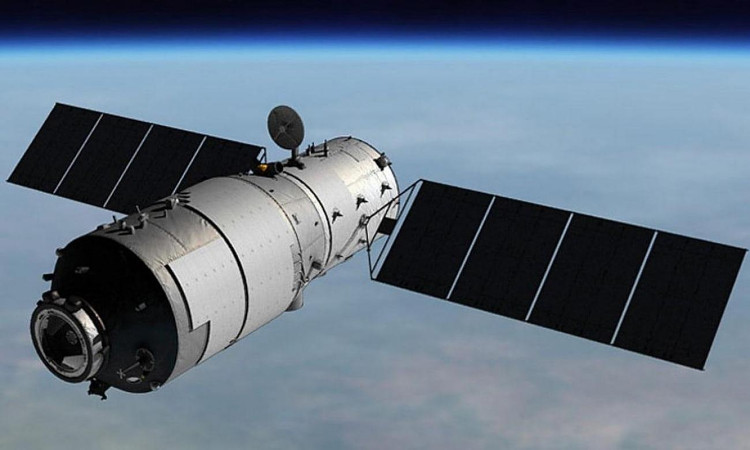China's 8.5-ton space station may crash into Earth in March
Experts identify the areas most likely to fall are Europe, America, Australia and New Zealand
, China's first space station is expected to fall to Earth within a few weeks, but scientists cannot be sure where the ship will hit, Guardian reported yesterday. The aerospace group in the US estimates that Thien Cung 1 station will fall back to the atmosphere in the first week of April. The European Space Agency (ESA) speculates the station falls between March 24 and 19 / 4.
In 2016, China confirmed its inability to control Thien Cung 1 station and could not control the station's return to Earth. The report from Aerospace, a research agency specializing in space flight consulting for governments and private companies, said "there is a possibility of a small amount of debris" left by the ship after falling and crashing to the left. Land. "If this happens, any leftover debris will fall in an area several hundred kilometers wide , " Aerospace wrote.

Thien Cung 1 station is falling faster and faster.(Photo: Guardian).
Aerospace warns the space station may contain highly toxic corrosive fuel called hydrazine. Aerospace's report provides a map that predicts the fall position of Thien Cung 1 station between 43 ° north latitude and 43 ° south latitude. The areas that are more likely to fall are north China, the Middle East, central Italy, northern Spain and northern America, New Zealand, Tasmania, some places in South America and southern Africa.
However, Aerospace stresses the risk of debris falling on people in these countries is very small."When considering the worst case scenario, the chance of a person being broken by Thien Cung 1 station is about a million smaller than the ability to win a Powerball lottery. In the history of space flight, no one has been injured. because the space debris falls back into the atmosphere, only one person ever recorded was hit by a cosmic debris, but fortunately she was not injured, "Aerospace said.
Jonathan McDowell, an astrophysicist at Harvard University, said the fragments from an equivalent-sized missile fell back into the atmosphere and landed in Peru in January. "Every two years, the same thing. happens, but Thien Cung 1 station is big and dense, so we need to keep an eye on it, " Guardian quoted McDowell.
According to McDowell, the fall rate of Thien Cung 1 station has increased in recent months and is now lowering about 6 km a week, compared with 1.5 km in October last year. It is difficult to predict when the station will fall because its speed is affected by frequent changes in the universe.
Thien Cung 1 station was launched in 2011. It is used for both manned and unmanned missions. Liu Yang, China's first female astronaut, visited the station in 2012.
In 1991, the Soviet Union's Salyut 7 space station crashed into the Earth while still pairing with another 20-ton space station called Cosmos 1696. Both stations broke in the atmosphere above Argentina, causing debris to fall scattered in the town of Capitán Bermúdez. NASA's 77-ton Skylab space station plunges to Earth on a nearly completely out of control route in 1979, some large fragments land on the outskirts of Perth city in Western Australia, Australia.
- The stray 8.5-ton space station will create
- China confirmed Thien Cung 1 station is about to crash into Earth
- The Chinese space station will fall to Earth in the next 24 hours
- How to observe the 8.5-ton space station is falling indefinitely to Earth
- The fall of satellites made the Earth
- The reason why China's 8.5-ton space station doesn't burn out when it falls
- China's 8.5-ton space station is about to plunge to Earth
- China is about to build a space station
- Places of China's 8.5-ton space station could fall
- In 2019 the Chinese space station will fall to Earth
- Thien Cung 2 space station re-enters the atmosphere, being 'controlledly destroyed'
- China's space station is about to plunge to Earth
 Van Allen's belt and evidence that the Apollo 11 mission to the Moon was myth
Van Allen's belt and evidence that the Apollo 11 mission to the Moon was myth The levels of civilization in the universe (Kardashev scale)
The levels of civilization in the universe (Kardashev scale) Today Mars, the sun and the Earth are aligned
Today Mars, the sun and the Earth are aligned The Amazon owner announced a secret plan to build a space base for thousands of people
The Amazon owner announced a secret plan to build a space base for thousands of people